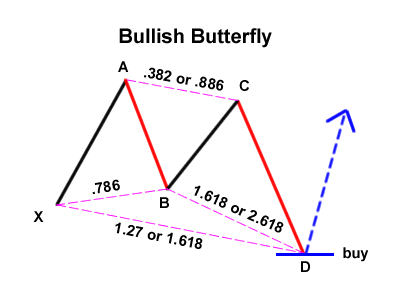Hi, and welcome to my thread.
Here I will be sharing how I use Elliott Wave to help provide me a road map for m trades in the markets and specific trades I look for and strategies I deploy.
The first thing I think needs to be understood in trading is it can never be easy but you should endeavour to make it as simple as possible.
Elliott wave can be a complicated theory but it can be also be simplified.
There is a lot of discretion in the various guidelines of Elliot but there are only three simple hard and fast rules.
1 - Wave two must not retrace 100% of wave one.
2 - Wave three must not be the shortest and is usually the longest.
3 - Wave 4 must not overlap with wave one.

All these three rules do is ensure we are remaining in a valid trending pattern of higher highs and higher lows.
This is why they are not only important, but critical, since Elliot is a trend following methodology.
Outside of this, there are three main things to be remembered when using Elliott.
1 - In itself, Elliot wave is not a trading strategy. It is only an aid.
2 - Elliot wave is a fractal pattern, so if we have waves on larger cohorts , we should find smaller version of them inside smaller charts.
3 - Elliott wave will not be present in all charts, you will not be able to make the theory fit to everything.
There is an abundance of free training on the theory of Elliott wave easily available to you by searching the internet, so this will not be an Elliott wave theory tutorial.
Instead it will be focusing specifically on how to exploiting the pattern for profit.
In following posts, we will cover;
1 - Optimum entry opportunities in a Elliot cycle.
2 - Knowing where to place hard stops in an Elliot cycle.
3 - Knowing where to trail stops and/or take profit in an Elliot cycle.
4 - Creative methods of money management/trade management in an Elliot cycle.
5 - Different styles of trading a cycle (eg, swing trading vrs shorter term scalping)
6 - Live analysis and results tracking of methodologies being deployed.
I will update this thread as often as time permits, so subscribe and check back for updates.
Here I will be sharing how I use Elliott Wave to help provide me a road map for m trades in the markets and specific trades I look for and strategies I deploy.
The first thing I think needs to be understood in trading is it can never be easy but you should endeavour to make it as simple as possible.
Elliott wave can be a complicated theory but it can be also be simplified.
There is a lot of discretion in the various guidelines of Elliot but there are only three simple hard and fast rules.
1 - Wave two must not retrace 100% of wave one.
2 - Wave three must not be the shortest and is usually the longest.
3 - Wave 4 must not overlap with wave one.

All these three rules do is ensure we are remaining in a valid trending pattern of higher highs and higher lows.
This is why they are not only important, but critical, since Elliot is a trend following methodology.
Outside of this, there are three main things to be remembered when using Elliott.
1 - In itself, Elliot wave is not a trading strategy. It is only an aid.
2 - Elliot wave is a fractal pattern, so if we have waves on larger cohorts , we should find smaller version of them inside smaller charts.
3 - Elliott wave will not be present in all charts, you will not be able to make the theory fit to everything.
There is an abundance of free training on the theory of Elliott wave easily available to you by searching the internet, so this will not be an Elliott wave theory tutorial.
Instead it will be focusing specifically on how to exploiting the pattern for profit.
In following posts, we will cover;
1 - Optimum entry opportunities in a Elliot cycle.
2 - Knowing where to place hard stops in an Elliot cycle.
3 - Knowing where to trail stops and/or take profit in an Elliot cycle.
4 - Creative methods of money management/trade management in an Elliot cycle.
5 - Different styles of trading a cycle (eg, swing trading vrs shorter term scalping)
6 - Live analysis and results tracking of methodologies being deployed.
I will update this thread as often as time permits, so subscribe and check back for updates.
Last edited:















